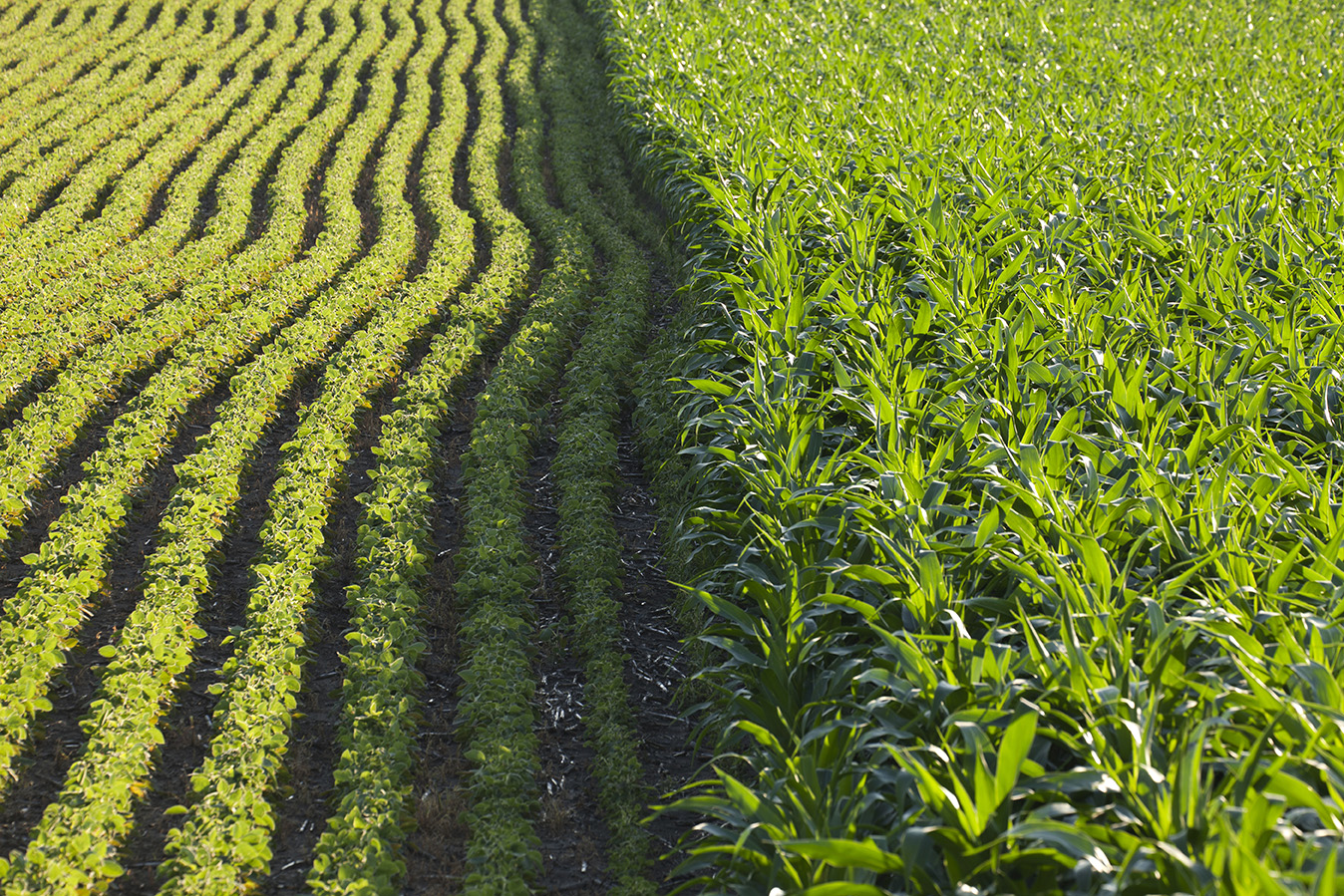Time and Crop Productivity
Time and Crop Productivity

Time is an important resource. We never seem to have enough, and it often passes too fast. But the truth is, we don’t often think about time when we think about crop productivity. We know that high yields require a fertile soil, a good variety, plenty of rain at the right time, and maybe a little luck, but time can also play an important role in determining crop productivity.
The length of the growing season (time from the last frost in the spring to the first frost in the fall) determines the time available for crop growth in temperate climates. It also determines the total amount of solar radiation (the energy source for crop growth) available for crop growth (ignoring winter crops, such as winter wheat).
The average length of the growing season and the total solar radiation during the growing season roughly doubled along a transect from far-northern Minnesota (49º N latitude) to New Orleans, Louisiana (30º N latitude). Doubling time and energy did not translate into an increase in average yields of soybean or irrigated corn. These crops could not use the extra time or the extra solar radiation to produce higher yields, even when the total growth duration of varieties (hybrids) used increased as the growing season increased. Grain crops are just not very efficient in using time to produce yield.
The key to understanding this inefficiency lies in the length of the reproductive growth phase -flowering, seed set, and seed filling – which doesn’t increase in step with the total growth duration. Our summary of data from 13 grain crops (including corn and soybean) suggested that the length of the reproductive growth phase reached a maximum when the total growth cycle reached about 100 to 110 days and did not change as the total growth cycle continued to increase. The length of the seed-filling period is the same on a variety that matures in 110 or 140 days.
The length of the seed-filling period is directly related to yield. The longer the seed-filling period, the higher the yield. So, if the seed-filling period doesn’t increase in step with the total growth duration, it is not surprising that yield doesn’t increase. A Maturity Group I soybean variety produced the same yield as a Maturity Group V variety in 40 fewer days in irrigated field experiments at Lexington, KY. The early variety was grown in narrow rows to ensure that the smaller vegetative plant provided complete ground cover, an important consideration when comparing varieties of different maturities.
The seed-filling period is usually only 30 to 40 days long, so all the grain yield is produced in a relatively short interval, another example of the inefficient use of time by grain crops. A Maturity Group III soybean variety, for example, grows for about 75 days before it finally gets around to producing seeds (yield). All systems must be in the go mode to produce high yields in such a short time.
The length of the seed-filling period is under genetic control in most crops. When plant breeders select for higher yield, the higher yields often come from longer seed-filling periods.
The length of the seed filling period increases as temperatures decrease. Lower temperatures mean longer seed-filling periods and higher yields. In fact, the late W.G. Duncan, a famous Crop Physiologist at the University of Kentucky, theorized that the ideal environment for high yield would have warm days (to maximize photosynthesis) and cool nights to lengthen the seed-filling period. Locations that meet these criteria have produced remarkably high corn yields.
Water stress during seed filling will accelerate leaf senescence, shorten the seed-filling period, and reduce yield. We found in greenhouse experiments that just 3 days of water stress accelerated leaf senescence and the acceleration was not reversed when the plants were re-watered, suggesting that just a few days of water stress may be enough to shorten the seed-filling period and reduce yield.
There are two interesting implications of the way that grain crops use time to produce yield. First, using a late maturity variety (longer total growth duration) doesn’t necessarily increase yield because the seed-filling period isn’t longer. This raises the possibility of using early varieties without sacrificing yield, although it may be necessary to use narrow rows to ensure complete ground cover by the beginning of reproductive growth. Early varieties may be useful in water-scarce environments to reduce water use without reducing yield.
Secondly, double cropping may be the only way to capitalize on longer growing seasons (climate change is making them even longer). Double cropping (growing two crops in the same calendar year) results in two seed-filling periods in one year, circumventing the problem of the short seed-filling period.
Time is an unappreciated resource that affects cropping systems and crop productivity. Time often controls where crops can be grown (is there enough time for the crop to mature?), and it affects how crops use the available time to produce yield. Understanding how crops use time to produce yield leads to the development of cropping systems that are more efficient and more productive. But remember, “if you can’t afford to waste time, you will never find the truth,” Yuval Noah Harari (Israeli historian and writer).
References
Egli, D.B. 2017. Seed Biology and Yield of Grain Crops. p. 150 – 161. CABI.
Egli, D.B. 2011. Time and the Productivity of Agronomic Crops. Crop Science 103: 743-750.
Citation: Egli, D., 2025. Time and Crop Productivity. Kentucky Field Crops News, Vol 1, Issue 7. University of Kentucky, July 11, 2025.

